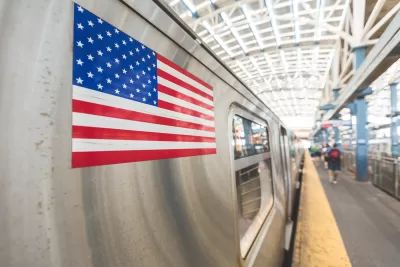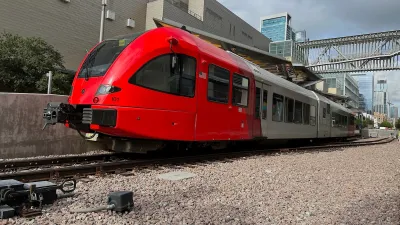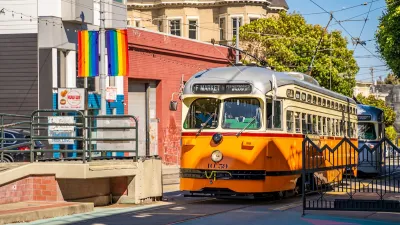A number of factors explain the partisan divide in support for transit.

Writing in Governing, Jared Brey examines the partisan divide over public transit. “It’s not a perfect partisan divide — transit investments have Republican supporters and Democratic detractors — but it’s been a feature of transportation planning going back decades.”
As Brey explains, “The reason for it has as much to do with geography as politics,” with support for transit largely splitting along rural-urban lines. “Republicans may also be less receptive to environmental arguments in favor of public transit than Democrats. But the ideological lines are messy: Advocates often point out that transit service gives people more choices for how to get around, while roads designed for private vehicles require huge public investments, too.”
Meanwhile, rural voters are unlikely to support state-level investments in public transit that primarily serves rural areas. “But it isn’t just a disinterest in big-city issues that makes transit a tough sell for rural legislators.” Rural communities have a harder time raising the matching funds needed for many state and federal grants, and rural transit — which can be a lifeline for many residents — is rarely cost-effective.
FULL STORY: What Drives Republican Opposition to Transit?

Alabama: Trump Terminates Settlements for Black Communities Harmed By Raw Sewage
Trump deemed the landmark civil rights agreement “illegal DEI and environmental justice policy.”

Planetizen Federal Action Tracker
A weekly monitor of how Trump’s orders and actions are impacting planners and planning in America.

The 120 Year Old Tiny Home Villages That Sheltered San Francisco’s Earthquake Refugees
More than a century ago, San Francisco mobilized to house thousands of residents displaced by the 1906 earthquake. Could their strategy offer a model for the present?

Opinion: California’s SB 79 Would Improve Housing Affordability and Transit Access
A proposed bill would legalize transit-oriented development statewide.

Record Temperatures Prompt Push for Environmental Justice Bills
Nevada legislators are proposing laws that would mandate heat mitigation measures to protect residents from the impacts of extreme heat.

Downtown Pittsburgh Set to Gain 1,300 New Housing Units
Pittsburgh’s office buildings, many of which date back to the early 20th century, are prime candidates for conversion to housing.
Urban Design for Planners 1: Software Tools
This six-course series explores essential urban design concepts using open source software and equips planners with the tools they need to participate fully in the urban design process.
Planning for Universal Design
Learn the tools for implementing Universal Design in planning regulations.
Clanton & Associates, Inc.
Jessamine County Fiscal Court
Institute for Housing and Urban Development Studies (IHS)
City of Grandview
Harvard GSD Executive Education
Toledo-Lucas County Plan Commissions
Salt Lake City
NYU Wagner Graduate School of Public Service





























